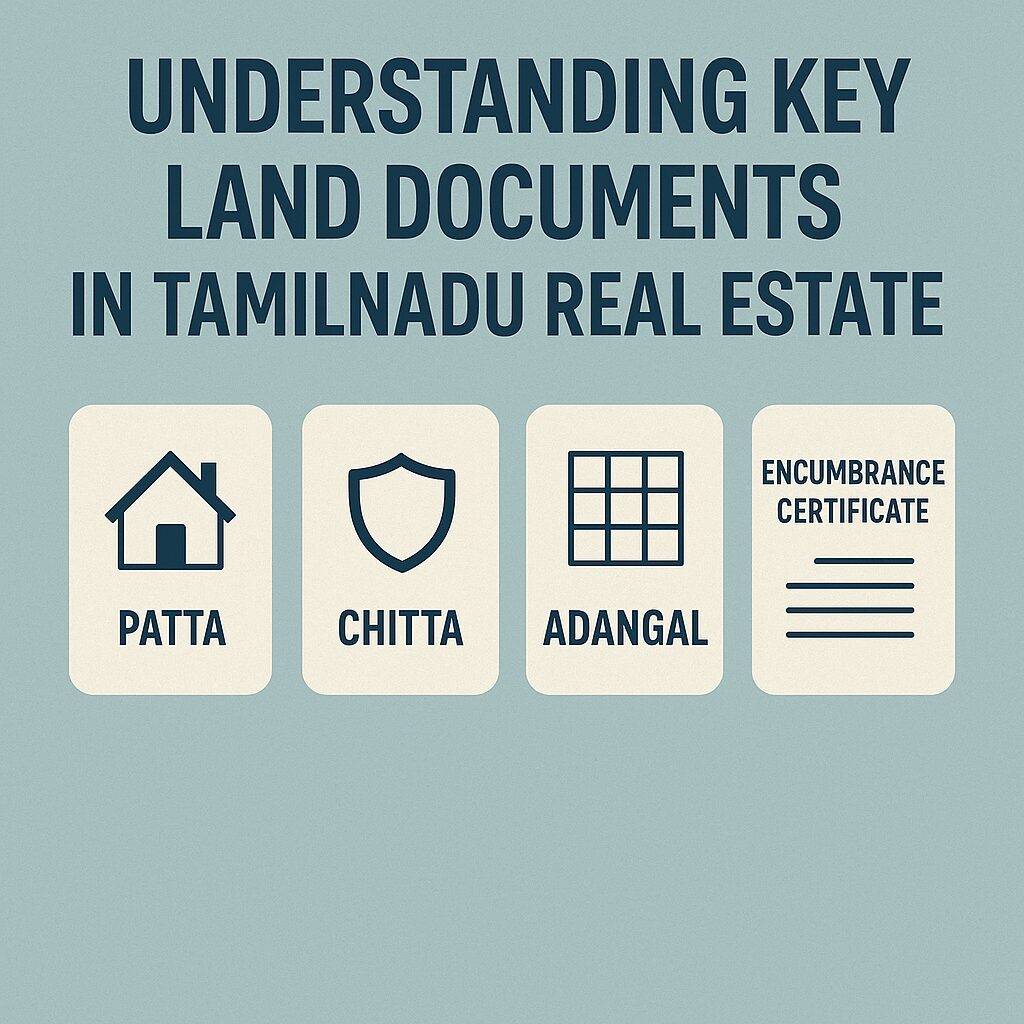Introduction
When buying or selling land in India—especially in states like Tamil Nadu—understanding legal documents related to property ownership and status is crucial. Among the most important are Patta, Chitta, Adangal, and the Encumbrance Certificate. These documents serve as proof of ownership, track land use, and ensure there are no hidden legal or financial complications.
Let’s break down what each of these documents means and why they matter.
📄 What is Patta?
A Patta is an official land revenue record that certifies who owns a particular piece of land. Issued by the government, it includes critical details such as:
- The owner’s name
- Survey number of the plot
- Type and classification of the land (agricultural, residential, etc.)
- Land area and boundary details
Why is it important?
Patta is required for proving ownership, especially in legal disputes and during land transactions like sales, purchases, or property transfers.
📋 What is Chitta?
Chitta is a document maintained by the Village Administrative Officer (VAO) that records land classification and ownership status. It plays a major role in determining how the land is used.
Key details in Chitta include:
- Classification as Nanjai (wet land) or Punjai (dry land)
- Ownership and survey number
- Size and extent of land
✅ Today, Patta and Chitta have been merged into a single digital document known as Patta-Chitta for easier access and verification in Tamil Nadu.
📒 What is Adangal?
Adangal (also called Village Account No. 2) is a village-level land record that focuses on land usage and cultivation. Maintained by the VAO, it includes:
- Who is cultivating the land (owner or tenant)
- Type of crops grown and season
- Source of irrigation
- Whether the land is wet (Nanjai) or dry (Punjai)
- Any liens or disputes on the land
Why is Adangal useful?
It’s crucial for farmers, banks, and government agencies when applying for loans, crop insurance, subsidies, or resolving land disputes.
🧾 What is an Encumbrance Certificate (EC)?
An Encumbrance Certificate is a legal document that shows whether a property is free of any monetary or legal liabilities such as loans, mortgages, or legal claims.
An EC includes:
- Details of all registered transactions involving the property
- Information about existing loans or liens
- A clear record that proves the property’s ownership history
Types of EC:
- Form 15 – Issued when there are encumbrances
- Form 16 – A Nil Encumbrance Certificate, showing no liabilities
When is EC needed?
- During property purchases
- While applying for home loans
- For property mutation or inheritance
🏁 Final Thoughts
Understanding these land documents is vital for anyone involved in real estate in India. They not only protect your investment but also ensure transparency and legal clarity. Whether you’re a buyer, seller, farmer, or investor, make sure to check these documents thoroughly before making any property-related decisions.
💡 Always consult local authorities or legal experts for the most accurate and updated information based on your state and property type.




